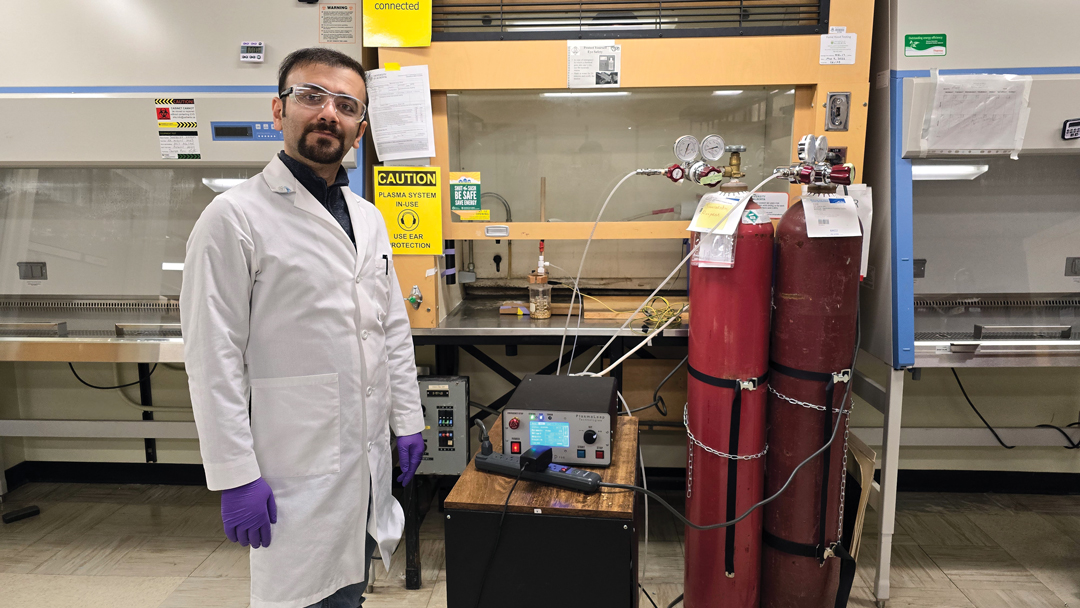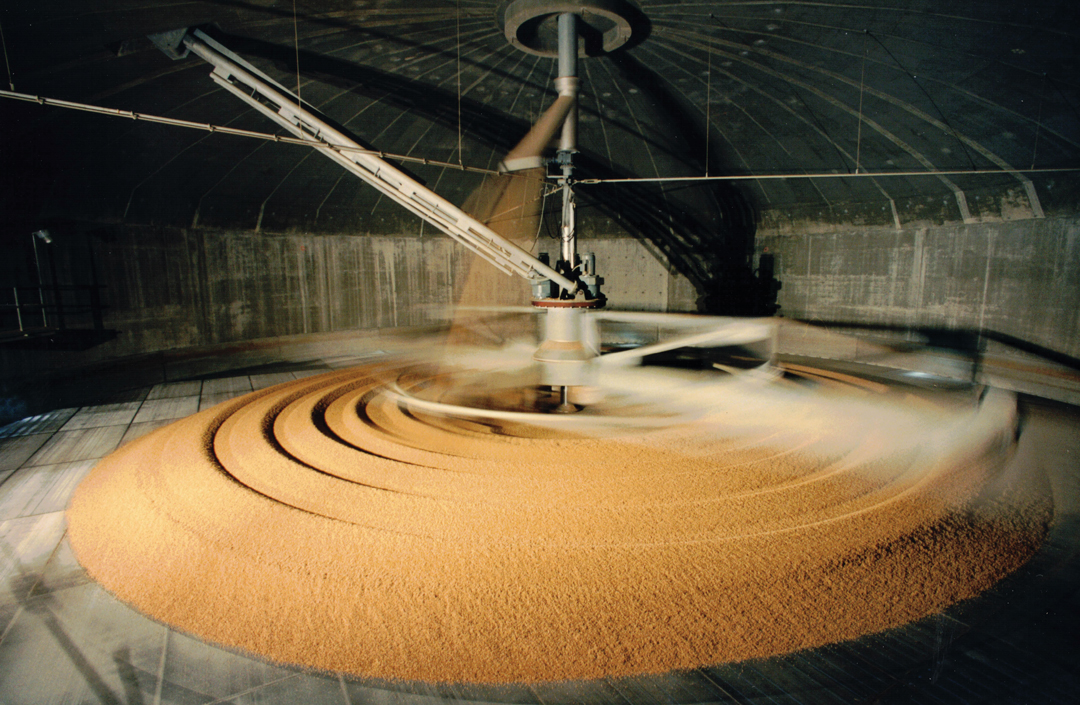SPOILAGE SOLUTIONS
BY GEOFF GEDDES • PHOTOS COURTESY OF UNIVERSITY OF ALBERTA
Up to half the world’s stored grains—1.6 billion tonnes—can be subject to spoilage every year. Such losses impair efforts to meet growth in global food demand. In response, two recent studies applied cutting-edge technology to better understand grain spoilage and seek solutions.
Using extremely bright light, a project led by Digvir Jayas examined changes within wheat kernels to identify durum varieties that are less likely to spoil. He conducted the research while at the University of Manitoba.
“We have been working for the last four decades to understand why grains like wheat, barley and canola spoil at the macro level,” said Jayas. “We developed systems to minimize spoilage, such as more efficient drying systems using horizontal air flow. If we gain a clearer picture of the changes that occur at a micro level during spoilage, we can use that information to develop varieties that spoil less easily.”
In collaboration with Canadian Light Source (CLS), a national research facility at the University of Saskatchewan, scientists employed the facility’s synchrotron equipment, a particle accelerator that shines intense light on research subjects. “Our technology can be used to characterize any material chemically and structurally, on a nano scale,” said Chithra Karunakaran, interim science director at CLS. “Without even cutting a seed open, it lets us view the internal structures and makeup of a kernel.”
Nutrients also play a role in the storability of seeds, so researchers examined the macro- and micronutrients within the kernel. What happens to these nutrients when the seed is exposed to moisture? How does that moisture impact the structure of the seed?
“When seeds are stored at a high temperature or with excess moisture content, we wanted to gauge how, in storage, fungus gets into the seed and damages it structurally and nutritionally,” said Karunakaran.
In assessing three durum varieties (AAC Spitfire, AAC Stronghold and CDC Defy), the study found that Stronghold was the least prone to spoilage. It also compared durum wheat to CWRS and found the latter less likely to spoil in storage.
“A critical determinant of spoilage was how micronutrients like magnesium and zinc were distributed and how they degraded at the molecular level,” said Jayas. “There were clear differences in degradation and distribution patterns between wheat varieties that resisted spoilage and those that did not.” Stronghold resisted spoilage better than Spitfire and Defy.
The project’s findings hold great promise in the eyes of the research team. “This three-dimensional data that we’ve compiled and the insights gleaned about spoilage should have a significant impact on the industry,” said Jayas. “Our results can help plant breeders create lines that resist spoilage while also aiding growers in prolonging the life of their stored grains.”
THE POWER OF PLASMA
Also thinking outside the bin, University of Alberta researchers are using atmospheric cold plasma to treat mycotoxin contamination caused by fungi in wheat and barley. “Mycotoxins affect 25 per cent of the world’s total grain production, so they are a global issue,” said associate professor M. S. Roopesh. He supervised the study conducted by his protégé, Ehsan Feizollahi (pictured above). “Everyone knows about the solid, liquid and gas states of matter,” said Roopesh. “Plasma is the fourth state of matter and is highly energized. It is this energy that can break down different molecules, such as mycotoxins, and render them less toxic.”
The fungi that cause mycotoxins can be found anywhere in the field, and they can be transferred from one place to another in many ways. A chief target of the study was deoxynivalenol, or DON, one of the most prevalent mycotoxins found in western Canadian wheat and barley.
The researchers used water treated with plasma, or plasma activated water (PAW), in place of regular water in the malting process. The important first stage, during steeping, the barley is soaked to promote germination prior to kilning. “We saw that PAW can degrade the mycotoxin content, improve germination of the grain, potentially help prevent spoilage of malting barley and possibly reduce mycotoxin contamination in beer.”
Given the study’s success, researchers are looking at the prospect of applying their method on a larger scale to treat grain for fungal infections. “Treating grain on a wider basis is challenging. This plasma technology is quite new, so we first need to produce more plasma- treated water and establish proof of concept.” Roopesh is at work on pilot scale development of a PAW generation unit, which could be useful for small companies as an initial step in adoption of the technology. Electricity, air and water are needed to generate PAW within a plasma reactor, so scaling up this research will require a multi-disciplinary team that may include food processing experts and electrical engineers.
Despite the hurdles, Roopesh sees great potential for growth. “When I first started experimenting with this technology, a small number of researchers were looking at it for food-related applications, and there were many advances in plasma applications for the electronics and chemical industries. Lately, however, several companies are using plasma technology to treat seeds and reduce microbes while improving germination.”
Though the operations he cites are smaller in size, treating kilograms of seeds per day rather than tonnes, Roopesh is encouraged to find plasma technology gaining acceptance in the grain sector. “In the next three to five years, I believe cold plasma and PAW will be used by more and more companies to reduce the spoilage of grains and other food products, so these are exciting times for industry.”







Comments